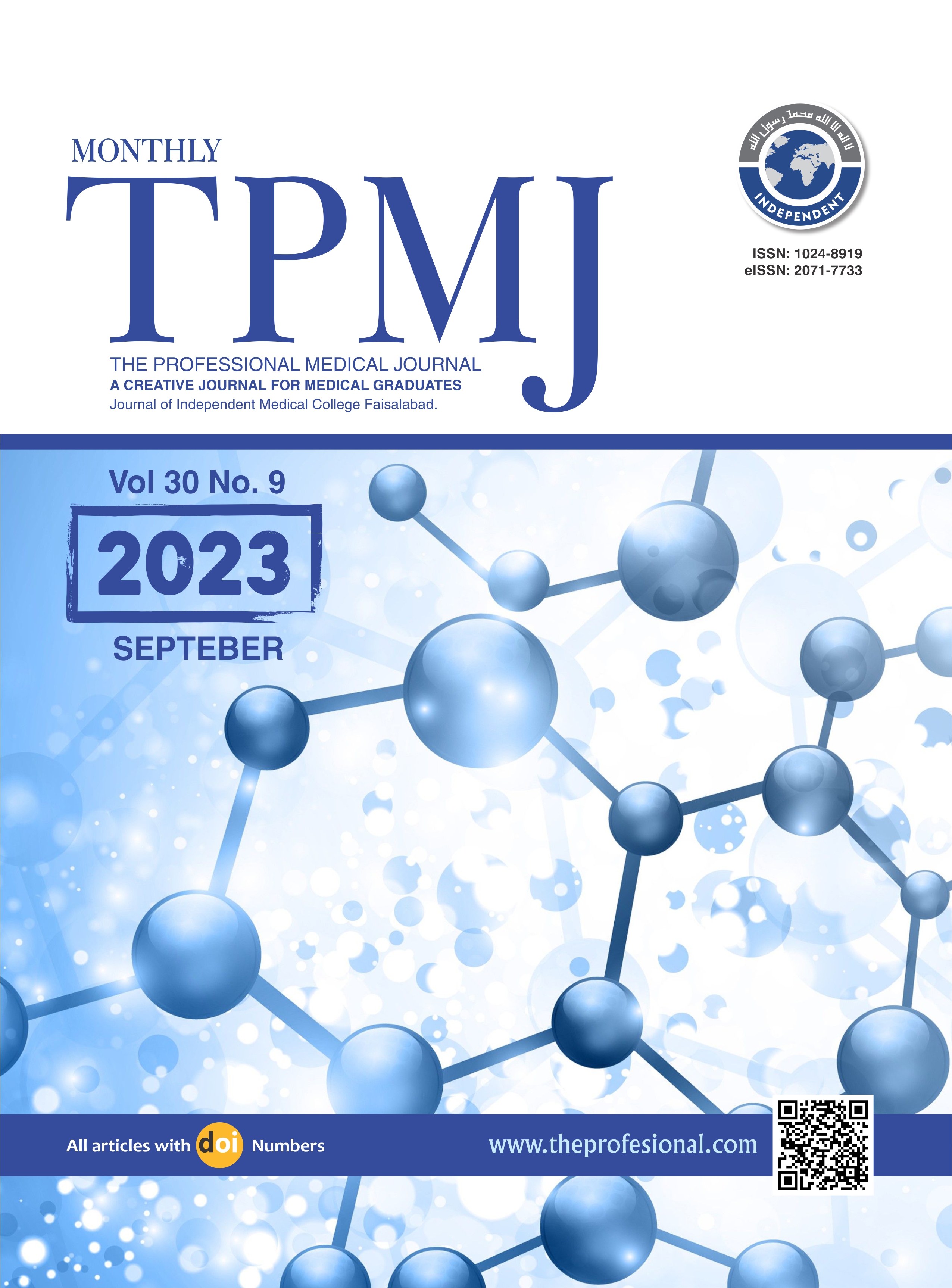Impact of fermented lactobacilli acidophilus and antibiotics topically during the phase of re-epithelization in wound repair of rats.
DOI:
https://doi.org/10.29309/TPMJ/2023.30.09.7402Keywords:
Healing, Lactobacillus Acidophillus, WoundAbstract
Objective: To compare the topical effects of lactobacillus acidophilus strain and topical antibiotics during the phase of re-epithelization in wound repair. Study Design: Experimental Longitudinal study. Setting: Al-Tibri Medical College, Isra University Karachi. Period: June to November 2022. Material & Methods: This longitudinal study took place in in which 45 Wistar rats were acquired and divided into three groups, Group A the control group in which normal saline was applied, Group B in which topical Lactobacillus acidophilus was applied, and Group C in which topical neomycin was applied on the 3rd, 7th, and 14th day of the study. A subcutaneous incision was given on all the rats of equal proportion, and on the 3rd, 7th, and 14th day of sampling a histological section was acquired. A micrometer was used to measure the thickness of the dermis and epidermis. Data was analyzed using SPSS, with the p-value set at <0.05. Results: Significant difference was seen in the mean thickness of epidermis when Lactobacillus acidophilus groups was compared with both Group A and C on the 3rd, 7th, and 14th day of the study. Significant difference was also seen in the mean thickness of the dermis when Lactobacillus acidophilus was compared with both Group A and C on the 3rd, 7th, and 14th day of the study. Conclusion: Lactobacillus acidophilus plays a potent rote in repairing dermal tissue as it increased the thickness of dermis and epidermis.
Downloads
Published
Issue
Section
License
Copyright (c) 2023 The Professional Medical Journal

This work is licensed under a Creative Commons Attribution-NonCommercial 4.0 International License.


